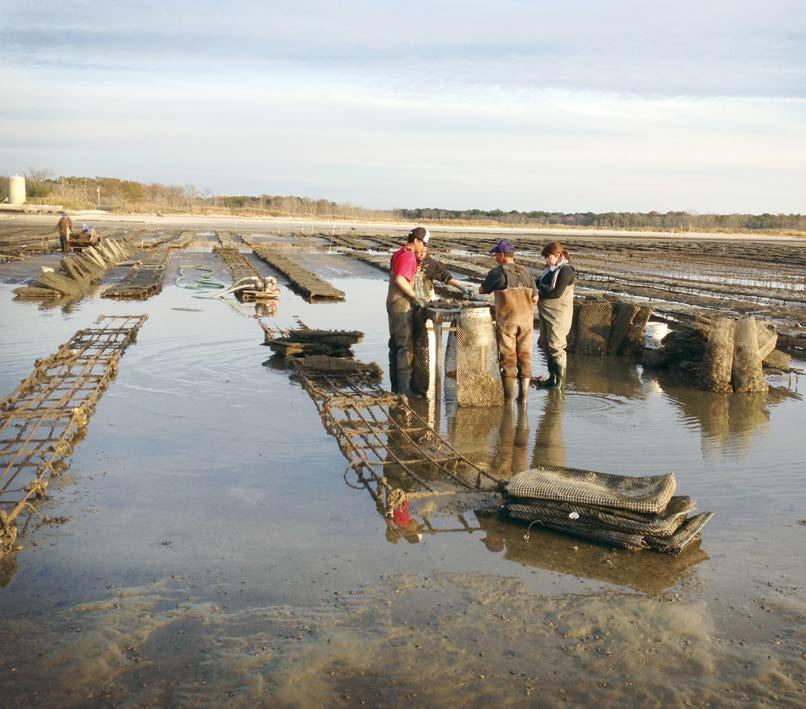
1 minute read
POLICY Shellfish Farmers and Restoration Scientists Finding Common Ground
oontinued from page 8 filter our bay water. At the recent Delaware Estuary Science & Environmental Summit in Cape May, we posed the following question to a group made up of shellfish farmers, local political leaders and ecological restoration groups: “What are the critical science gaps that will need to be addressed for you to fulfill development and expansion goals in the Delaware Estuary over the next 5 to 10 years?” The discussion that developed was thoughtful and informative. One of the most useful things that developed from the conversation was the clear message that the science needed by the two groups has considerable overlap. Sometimes these groups may seem to have divergent views and approaches, but it’s clear that watermen and shellfish farmers share a common vision with environmental organizations. They want to build a future that enables the controlled expansion of shellfish farms while supporting conservation and the enhancement of signature species, habitats and, in turn, the resiliency of local communities.
Faced with ever-increasing tides and storms that damage communities and livelihoods around the estuary, scientists are increasingly looking at shellfish as the means to offset climate change and sea level rise and improve the overall resilience of coastal ecosystems. This sounds simple enough, but many challenges still exist. For example, what if you want to use a species that we don’t yet know how to grow in captivity? Should we rely on harvesting wild animals from other places to make them part of a restoration project? If not, what alternatives exist? Adding to these challenges, many hurdles exist in New Jersey around implementing projects in areas closed to shellfish harvests. As restoration efforts continue to grow, it is clear that enhancing or restoring our estuarine shellfish will increasingly rely on hatchery sources of new animals, and benefit from:
Advertisement
1. the development of new techniques to cultivate key species
2. innovative solutions to farm challenges
3. policy reform that will allow for restoration in waters closed for fishing
All of the challenges faced by restoration groups are shared by shellfish farmers. For both, their collective goals will be achieved more rapidly, and effectively, with cooperation and collaboration. The resulting synergies will surely build a cleaner and more resilient estuarine ecosystem for everyone to enjoy. n










